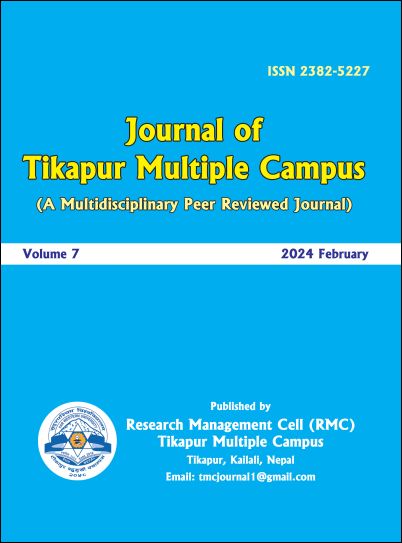Government Capacity: Evidence from Nepal
DOI:
https://doi.org/10.3126/jotmc.v7i1-2.63191Keywords:
Local governance, management capacity, performance, populationAbstract
Autonomous local governments are essential for maintaining stable economic and social development mechanisms and democratic regimes. The prime objective of the article is to examine the impact of pressure-capacity variables on local governance. Two sources of data, such as NPHC 2021 and LISA are used. Overall local government of Nepal has still weak performance as only 38 percent of total municipals have secured good ranking status. Based on PCP framework, total score of 10 composite indicators generated by LISA and some population management related characteristics (e.g., sex ratio, population density, literacy, household size, and two food coping strategy related variables) have been examined using multiple regression to understand interrelationship response and explanatory variables. The statistical analysis shows that there is a string relationship between pressure and capacity variables. Individually, three population related variables such as sex ratio, literacy and household size are positively correlated with total score of 10 indicators with low coefficient of determination. In addition to strengthening existing gender status, educational level and population growth, more socioeconomic and environment related variables as explanatory variables are necessary to link government capacity and its performance in Nepal.
Downloads
Downloads
Published
How to Cite
Issue
Section
License

This work is licensed under a Creative Commons Attribution-NonCommercial 4.0 International License.
This license enables reusers to distribute, remix, adapt, and build upon the material in any medium or format, so long as attribution is given to the creator. The license allows for commercial use.




